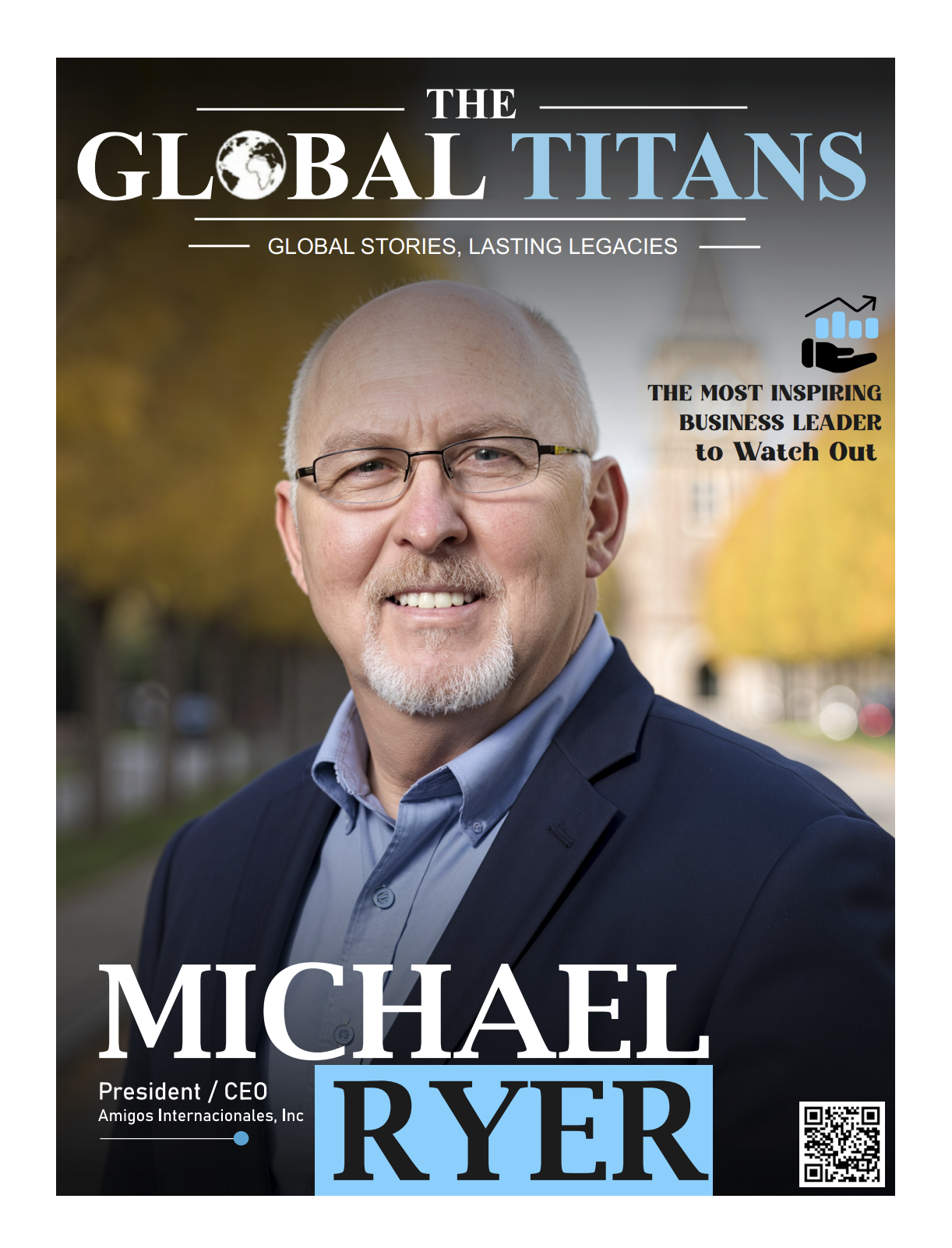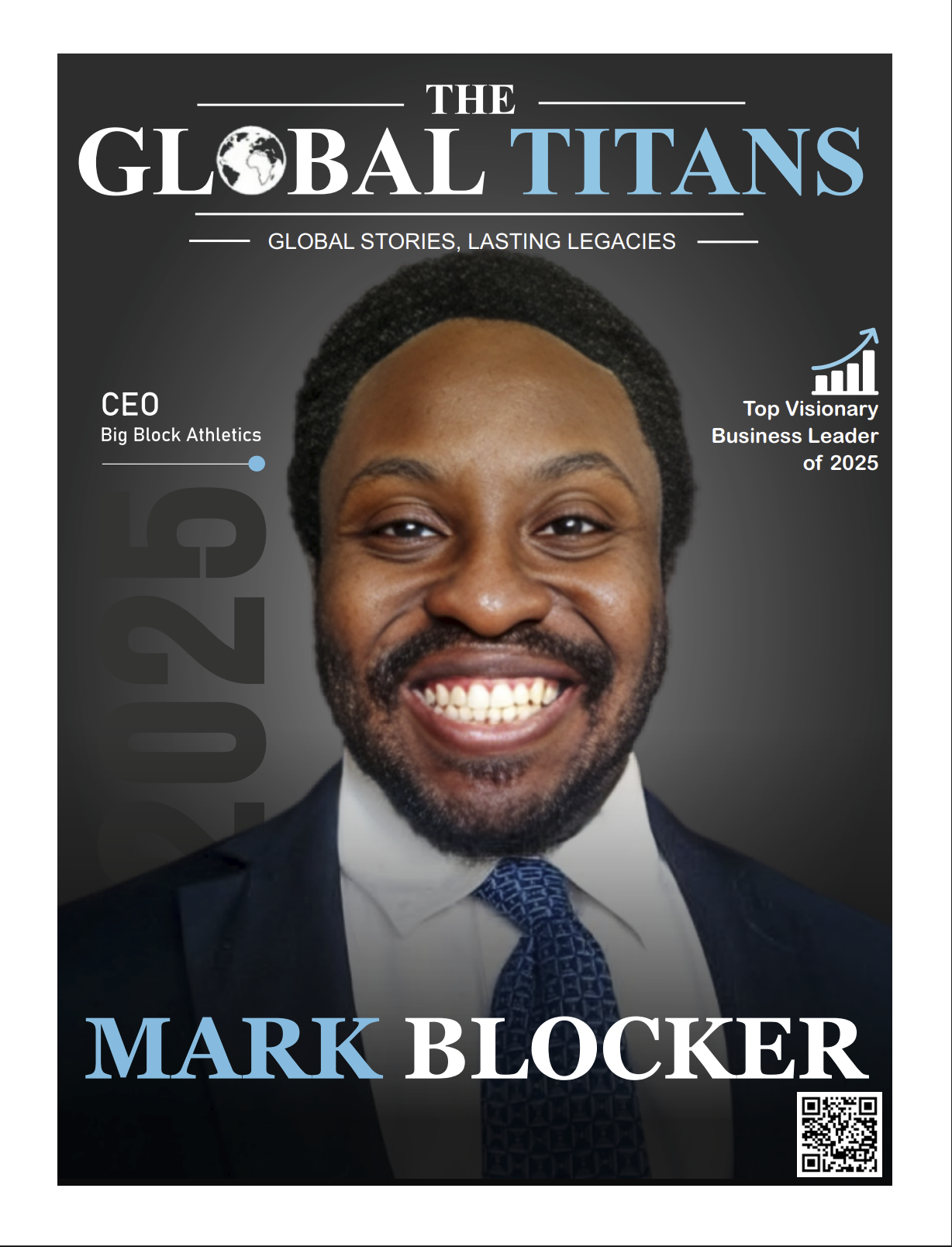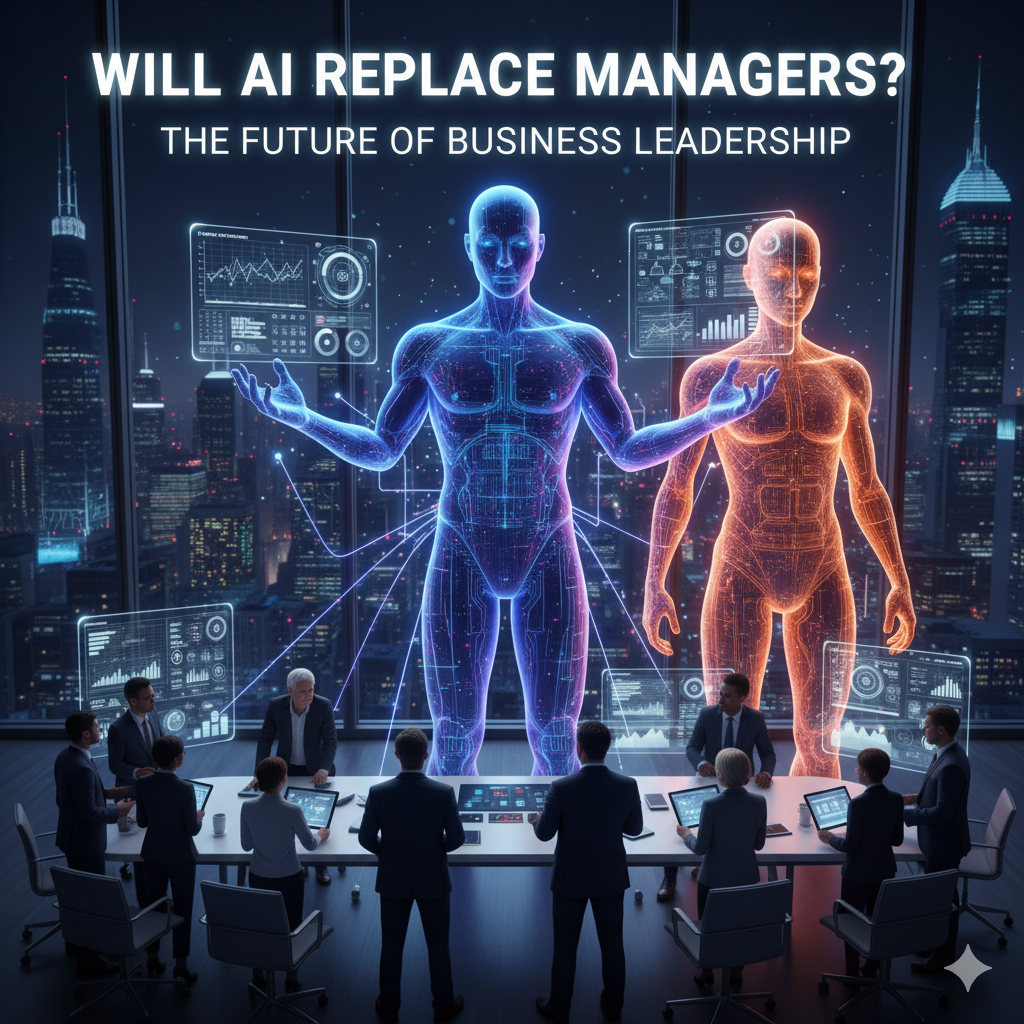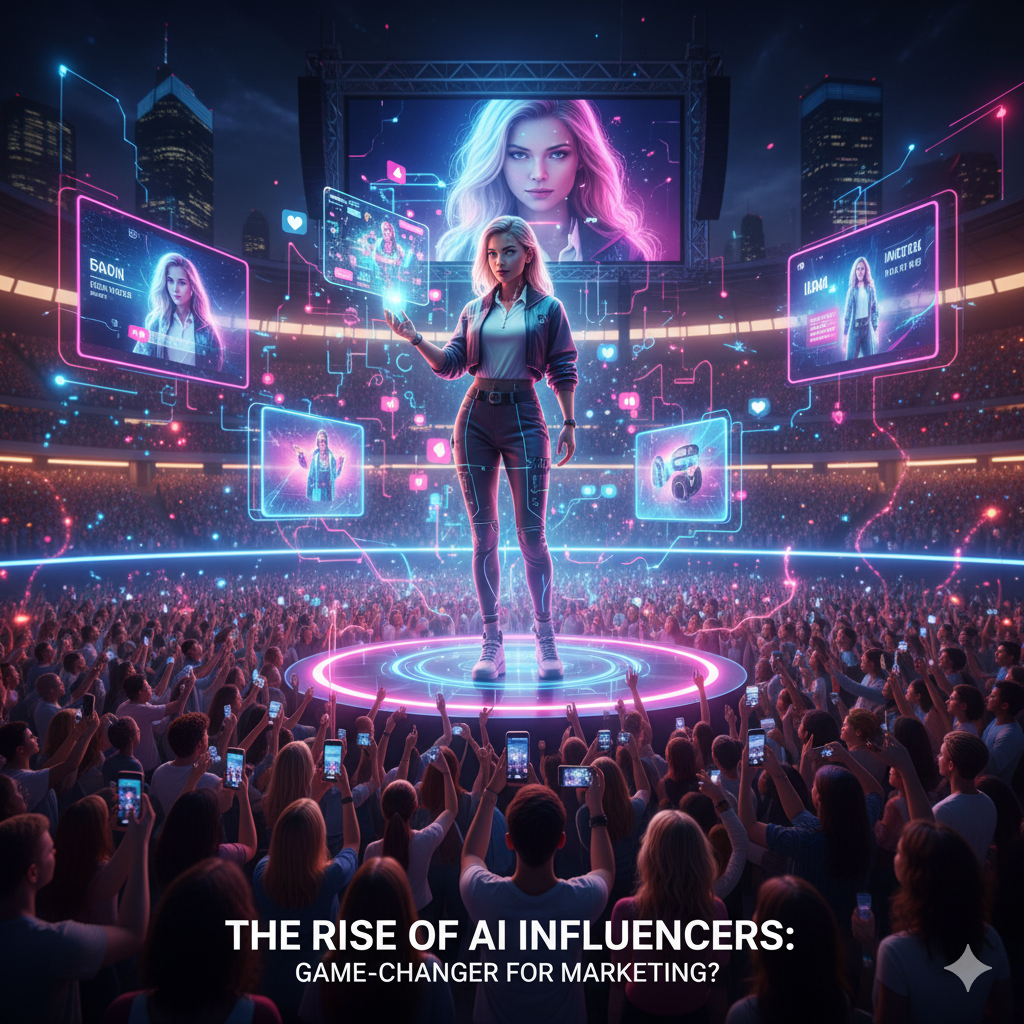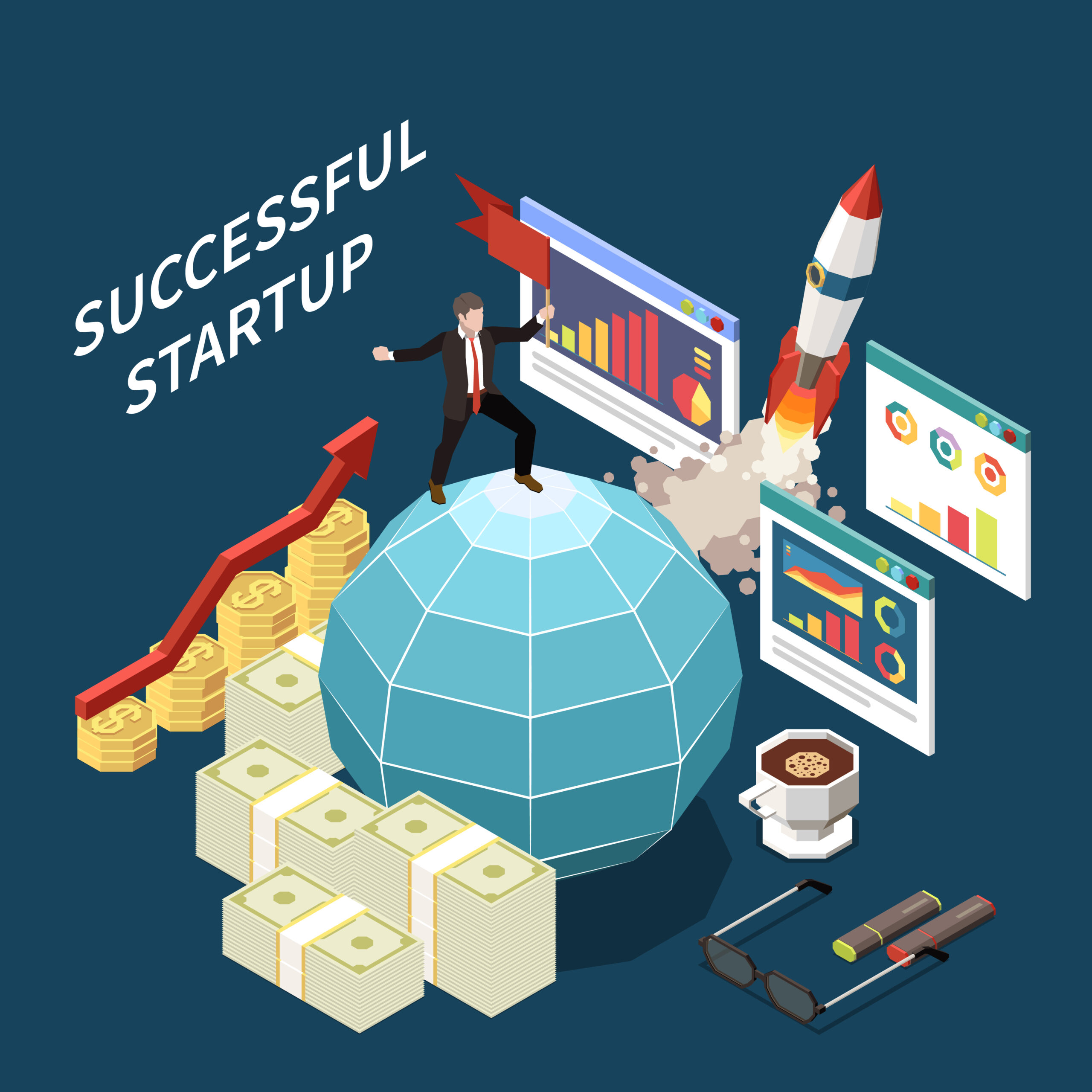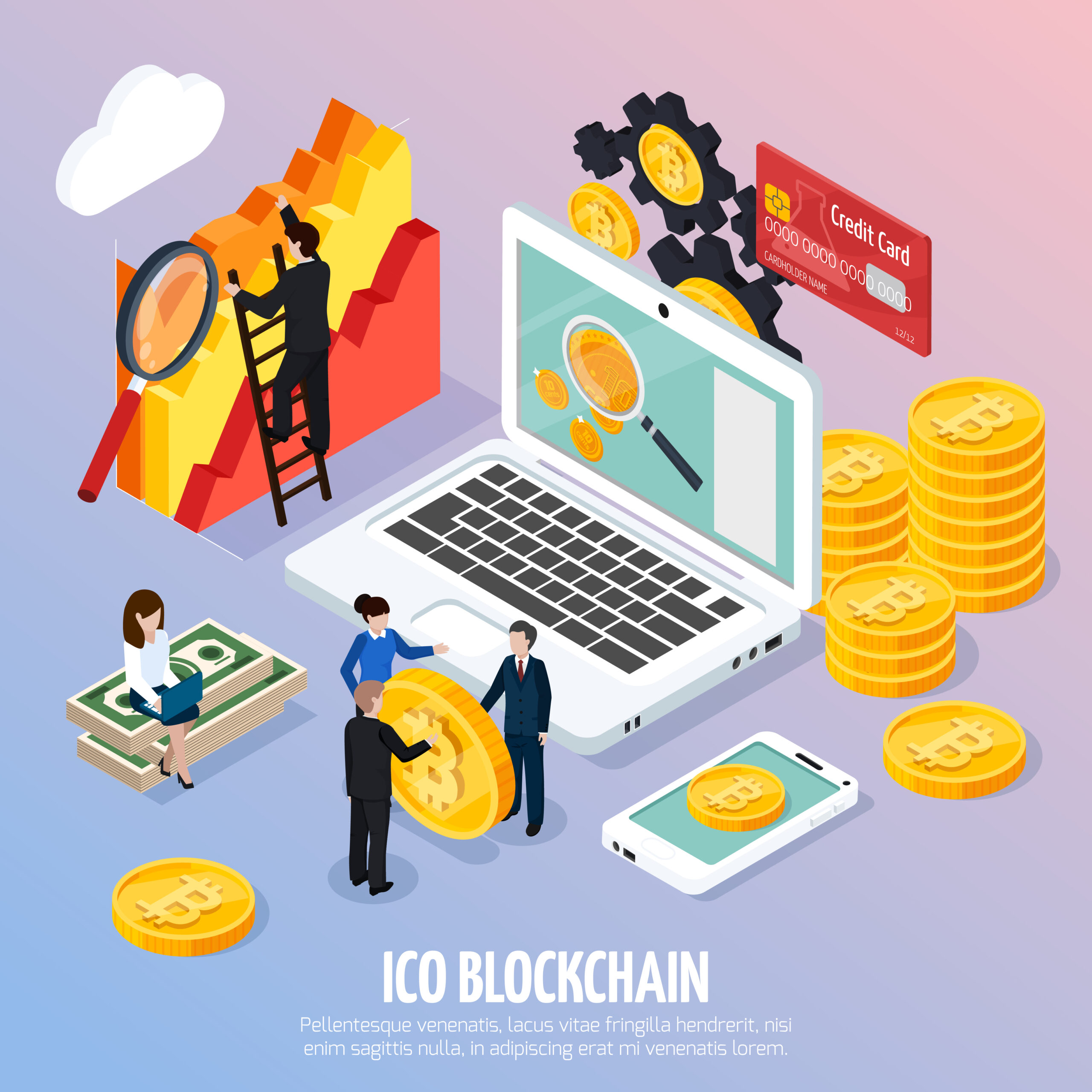In this edition of The Global Titans, we feature Michael E. Ryer — a leader driven by faith, compassion, and purpose.From his beginnings in Texas to leading Amigos Internacionales, he’s turned service into global transformation.His vision builds communities through clean water, education, and sustainable growth.Michael’s leadership redefines impact — blending strategy with heart.He stands as an inspiration for those who lead to create lasting change. Read More
Mark Blocker
In this edition of The Global Titans, we feature Mark Blocker — a purpose-driven leader transforming the world of sports and wellness.As the founder of Big Block Athletics, he turned personal passion into a movement that empowers athletes to thrive.Built from the ground up, his brand champions health, integrity, and opportunity.Through innovation and community, Mark leads with transparency, trust, and heart.His journey proves that true leadership begins with purpose — and grows through perseverance. Read More
Guillermo Kareh
In this edition of The Global Titans, we feature Guillermo Kareh — a leader defined by integrity, vision, and relentless pursuit of excellence.From his roots in Puebla to leading legal and corporate strategy across Latin America, he has turned challenges into opportunity.His leadership builds value by blending law, innovation, and ethical business practices.Guillermo’s career redefines corporate impact — showing that legal expertise can drive growth and transformation.He stands as an inspiration for those striving to lead with purpose, discipline, and resilience. Read More
Dr. Richard Larson
In this edition of The Global Titans, we feature Richard C. Larson — a visionary redefining how systems serve people.Known as “Doctor Queue,” he’s spent decades turning data and design into tools for fairness and efficiency.From MIT’s halls to classrooms worldwide, his work bridges technology with humanity.Through initiatives like MIT BLOSSOMS and LINC, he’s expanding access to quality education.Richard C. Larson’s legacy proves that smarter systems create a more just and connected world. Read More
Will AI Replace Managers? The Future of Business Leadership
Will AI Replace Managers? The Future of Human Leadership in an AI WorldThe managers who will shape the decade to come aren’t the most technical—they are the most human. Introduction: The real question behind the AI fearLet’s be real. If you are a manager, you’ve noticed the headlines and felt that quiet thrill of fear. “Is a robot going to do my job?” It is a natural concern, but it is the wrong question. The emergence of AI in business is not about replacement; it is about redefinition. The actual, more urgent question we should all be asking is: what type of manager will you be when the AI takes care of busywork? This is not a future scenario far off. AI can now schedule meetings, write emails, summarize reports, and monitor projects. This necessitates a long-overdue conversation on the actual value of a leader. If your value as a manager exists primarily in tasks, AI will make you redundant. But if your value resides in coaching others, making clarity, and establishing trust, then AI is your strongest partner—a tool that provides you with the one commodity you can never have too much of: time. This article will take you from being a task-focused manager to being an irreplaceable human leader. We will examine the managerial approaches AI will reveal, the resilient competencies it can’t copy, and offer a practical step-by-step plan to flourish in the future world of work. The exposure effect: What AI reveals about managementAI does not just automate tasks; it holds up a mirror to our management styles. When the administrative underbrush is cleared away, what is left exposed? For many teams, this has led to a revealing of managerial foundations. Broadly speaking, three types of managers are emerging in the face of AI adoption : The Task Tracker: This manager resides in status reports and spreadsheets. Their worth is based on having a file of who did what when. AI unmasks this approach since it can monitor tasks, deadlines, and progress at superhuman speeds and precision. The micromanagement by the Task Tracker becomes apparent—and intensely resented by teams. You Might Be Interested In No Posts Found! The Process Police: This manager prizes compliance and control first, habitually adding non-value-added steps and approvals “for safety.” AI uncovers this by cutting processes down to size and making them leaner. The bureaucratic gates that were once deemed necessary are exposed as what they are: friction that slows everyone down. AI is transforming management—not by replacing leaders, but by revealing which ones matter most. Task-focused managers are exposed; human-centered leaders are amplified. The irreplaceable skills? Empathy, ethical judgment, inspiring vision, and conflict resolution. These are the dimensions AI cannot touch. The playbook is simple: delegate administrative work to AI, reclaim time for coaching, mentorship, and culture-building. Leadership of the future isn’t about doing more—it’s about amplifying humanity through AI. – The Global Titians The Coach/Connector: This manager is dedicated to generating clarity, building people’s capability, and linking work to an important mission. This is the manager boosted by AI. With administrative burden removed, they can spend more time on strategic commentary, professional development, and relationship-building that creates an unshakably strong team. As one leadership writer succinctly stated, “AI won’t replace managers, but managers who act like it’s not here? They’re replacing themselves with irrelevance”. The unbeatable human advantage: Skills that AI cannot replicateThe better news for managers is that the most important leadership abilities are exactly the ones that AI can’t possibly imitate. They are not “soft skills”—they’re tough skills that will determine leadership worth for generations to come. Empathy and Trust-Building: Can an AI program tell that an employee is fighting a battle with a personal concern based just on the tone in which they speak during a meeting? Can it provide real comfort or establish a relationship of respect and trust? Not at all. Being able to connect on a human emotional level, to demonstrate you truly care, is the cornerstone of a dedicated and engaged workforce. Ethical Decision and Moral Fortitude: AI works based on information and patterns; it lacks a moral sense. Taking a hard decision involving fairness, privacy, or an area-of-gravity ethical issue takes human judgment. A manager needs to decide what needs to be done by the company, and not what can be done by it, and protect against the risk of biased results from AI. Inspiring Vision and Sense-Making: AI may be able to look at data and propose a strategic path, but it cannot create an inspiring vision that makes individuals feel they are part of something bigger than themselves. It falls to the leader to describe the “why” to link together a quarterly objective and the company’s purpose, giving context and significance no machine can. Conflict Resolution and Candor: AI may flag a conflict in a project schedule, but only a human can facilitate a respectful, direct conversation to fix the underlying tension. Maintaining space for challenging conversations, giving tough feedback with empathy, and mediating conflict are deeply human jobs . The managers who will succeed are those who double down on these indispensable human skills. Your hands-on playbook: From tasks to leadershipOne understands the theory; it is another thing to apply it. Here is a simple playbook to begin moving your role from taskmaster to coach. The “AI does X, I do Y” teamingA strong mental adjustment is to make an intentional pairing between the work you delegate to AI and the human work you take on. This leaves no question in your mind or anyone else’s about what gets done and who does it. AI writes the meeting summary and determines action items → You take 15 minutes to translate the most important discussion points into individualized coaching notes for two team members. AI books all your team meetings and one-on-ones → You extend every 1:1 by five minutes to query, “What is one thing you want to learn this quarter, and how can
Gen Z & Gen Alpha Enter the Workforce: What It Means for Employers
The Kids Are Coming: What Happens When Gen Z and Alpha Arrive at the Office So I was in a coffee shop last week, attempting to work, and couldn’t help but listen in on the conversation at the table next to mine. This young man—couldn’t have been older than 22—was interviewing for a position. What I noticed wasn’t his experience or qualifications, but the questions he was asking: “What is your company’s digital detox day policy?” “Do you provide mental health breaks?” “How does leadership respond to feedback from entry-level employees?” I almost spilled my latte. When I was his age, I was lucky to get a job offer. I would never have dared to ask about mental health breaks. That’s when it struck me: the workplace is going to change in ways we can’t even begin to imagine. See, we’ve been discussing Millennials for so long, we almost forgot the next wave to come. Gen Z (born between 1997 and 2012) is already upon us, and Gen Alpha (the children born after 2013) is hot on their heels. And trust me, they’re different.My friend Sarah owns a marketing firm and just brought in a 23-year-old graphic designer. “She sent in her resume as an Instagram-like carousel,” Sarah explained to me, still sounding a little dazed. “It was actually genius—displayed her work, her personality, the whole shebang. But I couldn’t help thinking, “Am I ready for this?” Who Are These Kids? I have a niece from this generation, and observing her experience the world has opened my eyes. She’s 19, and she doesn’t know a world without smartphones. She makes videos for entertainment, has side gigs I don’t quite grasp, and once informed me that email is “what old people use.” But here’s what we’re not getting if we only look at the tech aspect: these children grew up in lockdown. They skipped proms, graduation, and first dates. They learned social skills through screens. And now? They’re starved for contact, but on their own terms. My niece captured it beautifully: “We want to work with people, not just for them.” What They’re Bringing to the Table I was speaking to an owner of a restaurant who had employed a team of Gen Z servers. “To be honest, I thought they’d be a problem,” he confessed. “But you know what? They reorganized our whole ordering process through free apps that they downloaded off the internet. We increased our efficiency by 30% within a month.” These children don’t view technology as tools—they view it as part of themselves. They can identify inefficiencies we’ve been oblivious to for years. They’re instinctive problem-solvers because they’ve had to solve things out on their own on YouTube and TikTok. You Might Be Interested In No Posts Found! But it’s not all about tech. They possess this intrinsic radar for authenticity. I have a friend named Mark, who works in a retail store, and he said that he had a new employee that asked him in orientation, “When you say we’re like a family here, what does that really mean? Because my old job said that too, but they let go of three people without notice.” Ouch. But also: good point. Gen Z and Alpha are walking into offices with questions no one dared to ask before — about mental health breaks, feedback loops, and real work-life balance. They’re not lazy; they’re rewiring what “work” means. They grew up in crisis, connected through screens, and they crave meaning and transparency, not beanbags and slogans. They don’t just use tech—they breathe it. Yes, they challenge norms. But maybe that’s the point. They’re forcing workplaces to finally evolve into something more human, more flexible, and more honest. This isn’t rebellion — it’s a reboot. – The Global Titians The Elephant in the Room Come on—some serious eye-rolling is going on in management offices these days. I’ve heard them all: “They want too much too soon.” “They don’t want to pay their dues.” “They’re always on their phones.” But what I believe is missing here is that they saw their parents burn out for companies that did not have their backs. They experienced the financial crisis of 2008 deplete retirement funds. They grew up in a pandemic that demonstrated how fast life could change. So when they query work-life balance, they’re not being selfish—they’re being intelligent. When they seek flexibility, it’s because they’ve realized that you don’t have to be sitting in an office from nine to five in order to be productive. Making It Work The businesses that are doing well with these new generations aren’t the ones going out of their way to meet every requirement. They’re the ones actually listening. Consider my friend Emily, who owns a small architecture practice. She explained to me how they have instituted “focus Fridays”—no meetings, no e-mails, all deep work. “The Gen Z workers adore it,” she said. “But you know what? So does everyone else. We’ve all been hungry for this for years.” Another firm began providing “learning stipends” in place of certain bonus funds. Workers may spend it on courses, conferences, or even ceramics classes. “The young workers went wild over it,” the CEO said to me. “It turns out people do not want to stop learning, merely receiving paychecks.” The Tough Parts It hasn’t always been easy. One manager at a technology firm told me this anecdote: “I had an employee who was missing deadlines all the time. Finally, when I sat him down, he told me he was ‘overwhelmed.’ In my time, we just toughed it out. But then I caught myself—maybe we shouldn’t have toughed it out? Maybe we should have been discussing it?” There are communication silos, certainly. The official email threads we know? They view it as red tape. The lengthy meetings? They term it “time theft.” They’re looking for fast, unfiltered communication—Slack messages, voice messages, and short videos. What’s Actually at Stake Here’s the thing that keeps me up
The Rise of AI Influencers: Game-Changer for Marketing?
Say Hello to Your New Brand Ambassador: She’s Fake, Flawless, and Hijacking Your FeedOkay, let’s chop the corporate jargon for a minute. You’ve scrolled by. The improbably chiseled faces and impossibly styled hair, peddling energy drinks and designer handbags from a high-rise apartment in the future. They’re AI influencers. And if your initial thought was, “Wait, she’s not even REAL?!”—you’re with me. It’s a strange sensation, right? As if you’ve entered a sci-fi novel. My friend at a fashion brand DM’d me last week: “Dude, we just inked a deal with an influencer who isn’t real. My mind is blown.” It’s real. Currently. And it’s making every single marketer ask a hard question: Is this actually a game-changer, or are we all just being tricked by a very pretty, very costly PowerPoint slide? I’ve gone down the rabbit hole with this one. I’ve reviewed the analytics, I’ve viewed the engagement metrics, and I’ve had late-night arguments over the morality of it all. Here’s my no-BS, from-the-trenches commentary on what it all signifies for your 2024 and beyond marketing strategy. So, what in the world is an AI influencer, really? Forget all the technical mumbo-jumbo. Picture this: a group of writers, artists, and coders sit down and literally design a human being from scratch. They don’t merely create a face; they construct a soul. They assign them a name, a personality, a rich history (“She’s a Tokyo DJ and philosophy major who enjoys retro sci-fi and saved three cats”), and a visual aesthetic you can’t look away from. Then, they use fancy animation software (think next-level video game graphics mixed with movie-grade CGI) to bring this character to life. The result? Someone like Lil Miquela—who has millions of followers, has worn Dior, and even “released” a music single. Or Noonoouri, a tiny, wide-eyed character who champions sustainable fashion and somehow makes it look cool. They post selfies, they “travel,” and they have hot takes on current events. They have friend groups with other AI influencers. They are, for all practical purposes, digital humans existing in our analog world. It’s totally crazy. Why Marketers Are Secretly Obsessed (And You Would Be, Too)Let’s be brutally frank for a moment. Dealing with a list of human influencers can be an absolute nightmare. I’ve heard horror stories from brand managers that would curl your hair—last-minute cancellations, diva behavior, and the constant threat of a career-destroying scandal derailing a six-month campaign. You Might Be Interested In All Posts Uncategorized The Science Behind Building Healthy Habits Exploring the Evolution of Modern Digital Art Why Mindfulness Is Key to a Balanced Daily Life The Influence of Art on Contemporary Styles The Ultimate Guide to Sustainable Living AI influencers, theoretically, eliminate nearly all of that. Which is why the C-suite is so eager. They Never Have a “Bad Day”: Your million-dollar campaign will never be sidetracked because your influencer wanted to share a provocative political tirade at 3 a.m. There’s no ego, no scandals, and no shocking cancellations. The brand message is always on target. For a risk-averse brand, this is a wish come true. They work 24/7/365. Think of releasing a new smartphone in London, New York, and Tokyo simultaneously. Your AI superstar can be everywhere, communicating in the local language, without ever having to board a plane or deal with jet lag. The scalability and reliability are crazy. They are the ultimate global citizen. AI influencers are no longer sci-fi—they’re selling your sneakers and skincare right now. Brands love them because they’re flawless, tireless, scandal-proof, and endlessly customizable. They don’t age, complain, or post political rants. But perfection comes at a cost. These digital faces raise questions about authenticity, ethics, and the future of creative jobs. Can consumers really trust someone who doesn’t exist? The truth is, AI influencers aren’t replacing humans—they’re redefining roles. The smartest brands will mix both: human warmth for connection, digital avatars for imagination. The future of influence isn’t fake—it’s augmented. – The Global Titians Creativity on Steroids: You’d like your influencer to dance within a nebula to launch your new audio brand? No problem. You’d like them to miniaturize the watch component size to highlight the engineering? Simple. Anything is possible creatively because you’re not constrained by, you know, physics, logistics, or a fear of heights that a model might have. You’re constrained only by the imagination of your creative team. They’re an Asset to Your Company, Not an Expense: You’re not simply buying a single, one-time post; you’re creating or acquiring a character—a digital asset. You own it once you have it. There are no renegotiations, no management costs, and no auction frenzies. For long-term brand building, the economics can be incredibly attractive. Yes, but it’s not all good. The Big “Ick” FactorFor all the coolness and control, there are some rather disturbing red flags and ethical issues we can’t simply opt out of. This is where things get murky The “Fake Friend” Vibe, This is the crux issue, the elephant in the room. Effective traditional influencer marketing is because of trust and relatability. We relate to humans because we can empathize with their cluttered, imperfect lives, their failed cooking, bad hair days, and real pleasures. Can we ever really feel that about a robot designed to be flawless? I’m profoundly skeptical. The novelty is great now, but I fear viewers will tire of the perfection. It can be antiseptic and, worse, manipulative. The Honesty Problem: This is the issue that keeps me up at night. Should brands be legally forced to put a disclaimer: “Warning: This is not a real person”? Right now, the rules are fuzzy, but the ethical line feels clear. Failing to disclose feels like a deception. It’s a ticking time bomb for a PR disaster when (not if) a consumer feels genuinely tricked into believing they were engaging with a human. The backlash could be severe. Are We Stealing Jobs? It’s a legitimate and timely question. If a brand can hire a perfect,
Fastest Growing Startup Sectors in 2025
Forget the Hype: These Are the 5 Startup Goldmines You Should Keep an Eye on in 2025Let’s dispel the hype, please. Wherever you look, somebody’s heard somebody calling the “next big thing.” It’s exhausting. But after elbow-deep in investor pitch books and founder pitch decks the past few months, I can tell you that the actual, real growth isn’t where everybody thinks it is. The reality is the most thrilling startups of 2025 aren’t creating yet another social media application or marginally quicker delivery business. They’re solving the huge, unglamorous issues that haunt CEOs and governments in the dead of night. They’re in the industries that are so crucial, their success is practically inevitable. So, if you’re an entrepreneur looking for a real opportunity or an investor looking for a space that is still not saturated, here’s my honest take on where you should be investing your time. Climate Tech: The Trillion-Dollar Cleanup CrewI used to think “climate tech” referred to a pricey solar panel. Boy, was I wrong. This has ballooned into the most urgent area for innovation of all. Why? Because the world now has a consensus: going green is no longer a choice; it’s a multi-trillion-dollar requirement. The smart money nowadays isn’t just on clean power but on what comes next. I’m talking about startups that are, quite literally, cleaning the air. Companies developing direct air capture technology to pull CO₂ directly out of the air are becoming rock stars. Even more insane? They’re finding ways to cash in on that carbon by selling it to soda companies or leveraging it to produce sustainable aviation fuel. It’s a 180—taking our biggest problem and turning it into a commodity. And don’t forget the behind-the-scenes hero: energy storage. We’ve got lots of wind and sun, but we need enormous, grid-scale batteries to capture that energy for a rainy day. Startups that are solving this storage challenge are building the foundation for our whole clean energy future. Honestly, it’s one of the safest wagers you can make. Your AI Colleague is Here to Stay (And It’s a Lifesaver)The frenzy about AI stealing all our jobs is finally dying down, and something much more interesting is taking its place. The real heroes of AI are not building Skynet; they’re building the perfect specialist sidekick. Think about the dullest parts of any professional’s job. Now imagine an AI tool that only does that. I’ve seen startups craft AI co-pilots that handle the mundane in coding so that developers can focus on the creative architecture. I’ve seen AI assistants for lawyers that can sift through a thousand precedents in an hour, or for marketers who split-test ad copy in isolation. This is a movement. These firms aren’t peddling some vague “AI solution.” They’re peddling a blast of productivity for a very specific customer. And I’ll tell you what: when you can walk into a business and promise to double the productivity of their group without hiring bodies, you’ve got their attention. This is where AI gets useful and, frankly, where it starts printing money. You Might Be Interested In No Posts Found! Silver Tech: The Billion-Dollar Opportunity No One NoticedWhile the tech world fixated on millennials and Gen Z for decades, a massive, wealthy, and expanding technology-friendly generation was being nearly completely ignored: our aging population. The “Silver Tech” revolution has now finally arrived, and it’s more than just medical alert bracelets. It’s a total rethinking of later life. I’m excited about companies developing discreet home sensors that can ascertain whether or not the elderly have fallen over or forgotten to brew their morning coffee, sending out an automatic message to a family member. It’s about independence. This sector is brimming with opportunity because the need is so acute. From telemedicine platforms that manage five simultaneous prescriptions to simple social platforms of any kind ready to combat isolation, answers are desperately needed. Building a business here isn’t just profitable; it feels purposeful. It’s a chance to prosper and genuinely do good. Forget the hype — the real startup goldmines of 2025 aren’t chasing likes or faster deliveries. They’re solving the world’s toughest, least glamorous problems. From climate tech cleaning the air and storing clean energy, to AI sidekicks boosting productivity across industries, the future belongs to problem-solvers, not trend-chasers. Silver Tech is redefining aging with dignity, food innovation is brewing protein instead of farming it, and neurotech is literally rewiring the human body. These aren’t fads — they’re the next economic foundations. The winners of 2025 will be the founders obsessed with fixing what actually matters — not the ones building another app nobody needs. – The Global Titians Food’s Sci-Fi Makeover is UnderwayOur grocery stores reflect a failed system. But a new generation of businesspeople is re-imagining it, and what they’re doing sounds like it’s out of a science fiction novel. The most exciting category? Precision Fermentation. This is how microorganisms like yeast are utilized to “brew” real animal proteins. We’re not referring to the generation of real milk proteins from one cow. The environmental benefits are staggering, and the product is identical to what we are consuming today. It is not a veggie burger; it is the real thing, and it is made in a lab. Throw in AI-powered vertical farms that grow sheets of lettuce in a warehouse in downtown Brooklyn, using 95% less water, and you have a complete overhaul of the food chain. This is not some hippie quixotism anymore; it’s where we’re going to feed billions on a rapidly warming planet. The startups here are experimenting with the most fundamental human need: food. Neurotech: Deciphering the Mind to Cure the BodyOkay, this one’s going to spin your head a little, but stick with me. Neurotechnology—techno that interacts with our nervous system—is moving from the realm of pure fantasy into the clinic. Today, the biggest impact is in medicine. I’ve spoken with entrepreneurs who are developing non-invasive headbands that allow a paralyzed person to operate
The Rise of Green Finance: Where Investors Are Putting Billions
So, we’re doing this hybrid work thing. Now what?You know what I miss? The drive home. Not the traffic, of course. Nobody misses that. I miss the mental switch. That ten-minute buffer between office craziness and opening my front door where I could just… decompress. Listen to some crummy radio. Process the day. Now? My office is only ten steps from my kitchen. The “commute” is me walking from my laptop to the fridge. And sometimes, I don’t even really clock out. I just… linger. Send one more email. Fix one more typo. This is the chaotic reality of our new world. We battled for the convenience of working from home, and we achieved it. And now we’re finding out that integrating work and life is much more complicated than we imagined. The solution everyone’s coming around to is “hybrid.” But in all honesty, most of the strategies I’m hearing tend to sound like they’ve been dictated by somebody who’s never actually had to multitask a Zoom meeting and a yapping dog. So, let’s get past the corporate doublespeak. What is a hybrid model that won’t actually drive us all crazy like? Based on conversations with my friends and my coworkers and just suffering through it myself, it’s not about some fancy policy. It’s about some basic, human realities. First, we need to eliminate this “us vs. them” mentality. My friend Dave has a company that requires three days in the office. The catch? The top executives are hardly ever present. So the junior staff are all sitting at their desks, being compliant, while the top executives are working from their lake homes. It’s generated this terrible, unspoken resentment. A true hybrid model can’t have two classes of citizens. If the team is together, and even one member is offsite, the entire meeting needs to be remote-first. That is, everyone calls in from a laptop of their own, even if you’re sitting side by side. Sure, it does feel a little goofy initially, sitting in a conference room wearing headphones. But you know what? It means the guy who’s at home can actually hear and contribute. It makes them a part of it, not a spectator. It’s about dignity. Second, the office must have a purpose to exist. Why should I drive an hour, pay for parking and gas, and wear actual pants? It has to be for something I can’t accomplish at home. If I’m commuting into the office solely to sit on the same Zoom meetings I can do from my kitchen, then the model is broken. The office should be reserved for the human things. The impromptu collaboration. The whiteboard meetings. The team lunches. We have to lose the mentality of the office as a place to work and gain the mentality of the office as a place to connect. Rearrange the space. Get rid of banks of quiet cubicles and add more open spaces for conversation, brainstorming, and just plain laughing together. Make it a destination people desire, not a place they’re obligated to go to. Third, and this is the big one: trust is the only thing that matters. If your manager is tracking your mouse movements or counting the minutes you’re “active” on Slack, the hybrid model is already dead. You’ve built a model on surveillance, not trust. The adjustment we must make is from measuring hours to measuring output. It doesn’t matter that Sarah works best from 6 AM until 2 PM so she can take her kids from school. It doesn’t matter that Mark is a night owl who smashes his projects after supper. What does matter is: is the work actually getting done? Is it quality work? Are they on call for their team? You Might Be Interested In No Posts Found! This takes a tremendous leap of faith on the part of managers. They must surrender control. And it takes maturity on the part of employees. We have to own up. It’s a new social compact. Hybrid work isn’t just a policy shift — it’s a human one. We won the right to work from home, but now we’re learning how hard it is to switch off when the office is ten steps from the kitchen. The answer isn’t more rules; it’s more trust. A real hybrid model means no “us vs. them” divide, an office designed for connection not attendance, and managers who measure output, not mouse movement. It’s about creating spaces — physical and digital — where collaboration, laughter, and genuine trust can thrive. The future of work isn’t remote or in-office. It’s human — messy, flexible, and built on conversations, not control. – The Global Titians The Little Things Make a Big Difference. It’s the small, human moments we’ve lost that are most difficult to replace. The “how was your weekend?” at the coffee machine. The brief, “Hey, can I run something by you?” that prompts a great idea. We need to be deliberate about recreating this. One group I know has a “virtual watercooler” Slack channel where they just share stupid memes and pictures of their pets. Another manager I know periodically pairs two individuals up for a 15-minute video coffee break every week, just to chat about something other than work. It’s awkward, yes. But so were team-building activities at the office. The idea is to make space for connection to occur. The Bottom Line. We’re all figuring this out as we go along. There isn’t a perfect playbook. A successful hybrid model is not a codified set of rules—it’s a culture. It’s a culture of trust, of flexibility, and of keeping in mind that we’re all just people trying to do good work while living our lives. It’s about providing me with the ability to work from home when I must concentrate and providing me with a valid reason to come into the office when I must collaborate. It’s recognizing that at times the best thing I can accomplish
Crypto Regulation in 2025: What Businesses Need to Know
Crypto Regulation in 2025: A Survival Guide for Businesses (No Jargon, I Promise!)Okay, so what about crypto regulation? I know, I know—it’s about as thrilling as reading the back of a cereal box. For years, it’s been this murky cloud looming over the entire industry. Companies like yours were left guessing. Are we even doing something wrong? What if we make a mistake? Well, I’ve been digging deep into it for a final year project, and the huge takeaway is this: 2025 is when everything shifts. The “Wild West” days of crypto are finally going to have some sheriffs and rulebooks. And frankly? That’s good news for businesses that actually want to utilize this tech, rather than betting on it. This isn’t about killing innovation. It’s about trust-building. Consider it this way: you can’t play the newest, hottest video game on a computer from 1995. You want a new OS. All of this regulatory business is really us putting in that new OS. It’s a tedious process; you have to reboot a lot, but after it’s finished, everything else is smoother and faster. So, get a coffee. Let’s pull apart what’s really going down in the crypto world rule and what you, as a company, need to do to not only survive but also absolutely thrive. The World is Getting Its Act Together (Slowly)First up, the global picture. It used to be a total mess. One country would welcome crypto with open arms, while its neighbor would ban it completely. Trying to run an international business was a nightmare. Now, things are starting to crystallize. Major economic powers are finally making their moves. You Might Be Interested In No Posts Found! The US: Still Figuring It Out, But Getting WarmerThe US has never been shy of a little drama when it comes to crypto. You’ve got the SEC (the “stock market cops”) and the CFTC (the “commodity cops”) locked in a perpetual tug-of-war regarding who gets to make the calls. The question of a billion dollars has always been, “Is this particular crypto token a security or a commodity?” From what I’ve been reading, 2025 is when we’re finally getting some real answers. It’s not one giant law but a series of court cases and mini-bills that are gradually placing lines in the sand. The bottom line? If you’re doing something similar to a bank and holding onto people’s money, you’ll be treated similarly to a bank. If you’re operating a trading platform, you’ll be subject to trading platform regulations. It’s getting that straightforward. The crypto Wild West is finally getting rulebooks — and that’s a good thing. 2025 marks the year when regulation stops being the enemy and starts becoming the foundation for trust and real growth. The U.S. is slowly clarifying who polices what, Europe’s MiCA law has already set the gold standard for clear, consistent rules, and Asia’s mixed approach proves one size doesn’t fit all. For businesses, the message is simple: compliance isn’t optional anymore — it’s your competitive edge. Get serious about KYC and AML, follow the “travel rule,” keep perfect tax records, and use regulated custodians for crypto storage. It’s not just about ticking boxes — it’s about showing customers and partners you’re the real deal. Bottom line: these new laws aren’t roadblocks — they’re the roadmap. The companies that embrace regulation now will be the ones leading crypto into its mature, trustworthy, and truly global phase. – The Global Titians Europe is Preening with “MiCA.”Meanwhile, the US debates, and the European Union went ahead and did it. They launched this gigantic legislation named MiCA (Markets in Crypto-Assets). It’s one rulebook across all 27 EU nations. If you wish to conduct any crypto business in Europe, you must get MiCA. It’s a changer. It places a big emphasis on stablecoins (ensuring they are actually backed by assets) and compels all the major players, such as exchanges and wallet providers, to obtain a license. From the business perspective, it’s actually great. It means you know precisely what the regulations are from Lisbon to Berlin. Asia: A Mixed BagIn Asia, you have two entirely different approaches. Countries like Singapore and Japan are all about “regulated innovation.” They’re establishing licensing regimes to bring in serious business. Then you have China, which remains quite set on saying “nope” to the entire process. It just proves you can’t have a one-size-fits-all policy—you have to know what the rules are locally. Your Action Plan: The 2025 Compliance Cheat SheetOkay, enough theory. What do you really need to do? Here’s a simple list. KYC/AML is Your New Best Friend.“Know Your Customer” and “Anti-Money Laundering” might sound scary, but they’re just fancy words for “checking who you’re dealing with.” The days of anonymous, enormous crypto transfers are gone. Your To-Do: Obtain a good, customer-friendly system to authenticate your customers’ identities. It’s not merely a good idea; it’s the law all but everywhere nowadays. It does guard you and your customers. The “Travel Rule” Is a Hassle You Can’t Ignore.This one’s technical, but bear with me. It’s a regulation that stipulates that if you’re transferring crypto in excess of some amount, you must transfer information about the receiver and sender, just as a bank does in the case of a wire transfer. Your Task: Ensure your tech infrastructure is capable of that. You’ll likely need to utilize a specialized software provider that will enable you to securely gather and distribute that information. It’s a hassle to implement, but it’s becoming best practice. Don’t Mess With Taxes. Seriously.Governments have now realized that crypto can be made to yield real cash, and they need their share. The IRS and other taxing authorities are becoming extremely sophisticated at tracing. Your To-Do: Sit down with an accountant who actually knows crypto. Document each and every transaction—what you purchased, when you bought it, and how much you paid. When tax time rolls around, you’ll be so happy you did. The Silver Lining: How to

